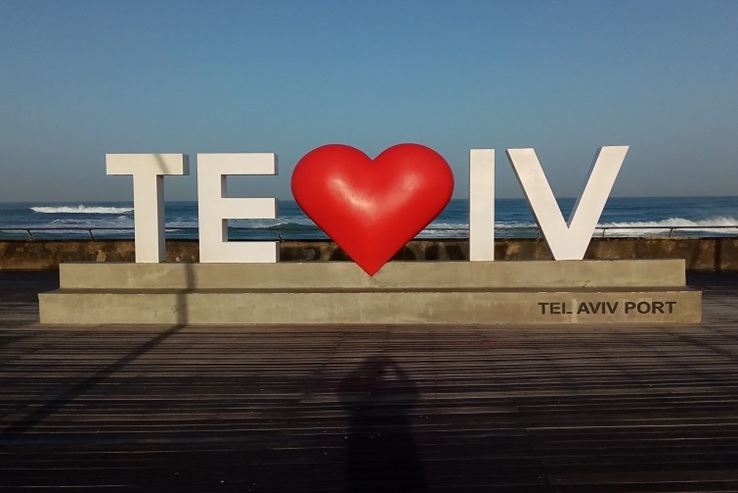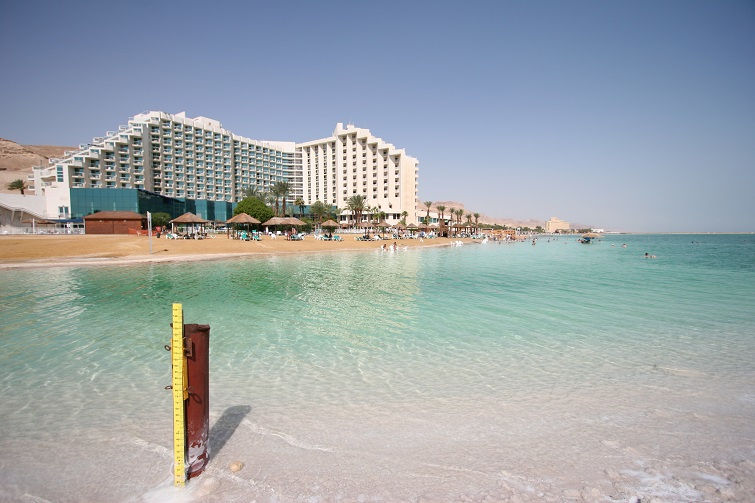Qasr el-Yahud Baptismal Site
Visiting Christian Sites in Israel
Revised and Updated – April 2025
Table of Contents
- Qasr el-Yahud: The Baptismal Site on the Jordan River
- Historical and Religious Significance
- What to Expect at Qasr el-Yahud
- Planning Your Visit
- A Day Trip to Qasr el-Yahud, the Dead Sea, and Masada
- Exploring Beyond Qasr el-Yahud
- An Alternative Baptismal Option: Yardenit
- Why Visit Qasr el-Yahud?
- About The Author
- FAQ: Visiting Qasr el-Yahud
- Related Posts
Qasr el-Yahud: The Baptismal Site on the Jordan River
- Nestled along the banks of the Jordan River in Israel, Qasr el-Yahud is a site of profound historical, religious, and cultural significance. Revered as the traditional location of Jesus Christ’s baptism by John the Baptist, it draws pilgrims, tourists, and history enthusiasts from around the world.
- Located just a short distance from the Dead Sea and Masada, Qasr el-Yahud makes an excellent addition to a day trip itinerary in this iconic region of Israel. This guide will provide everything you need to know to plan your visit, from its historical importance to practical travel tips.

Historical and Religious Significance
- Qasr el-Yahud, meaning “Castle of the Jews” in Arabic, is steeped in biblical history. According to Christian tradition, this is the spot where John the Baptist baptized Jesus, an event marking the beginning of Jesus’ public ministry (Matthew 3:13-17). The site is also believed to be near the location where the Israelites, led by Joshua, crossed the Jordan River into the Promised Land after their exodus from Egypt (Joshua 3:14-17).
- For centuries, Qasr el-Yahud has been a place of pilgrimage. Its serene setting along the narrow, meandering Jordan River adds to its spiritual allure. The site’s significance extends beyond Christianity – its proximity to Jericho, one of the oldest continuously inhabited cities in the world, ties it to broader narratives of human history in the region.
- During the 20th century, the area became part of a militarized zone following the 1967 Six-Day War, when Israel took control of the West Bank. Landmines and restricted access limited visits for decades. However, in 2011, after extensive demining efforts, Qasr el-Yahud was reopened to the public, revitalizing its status as a key destination.
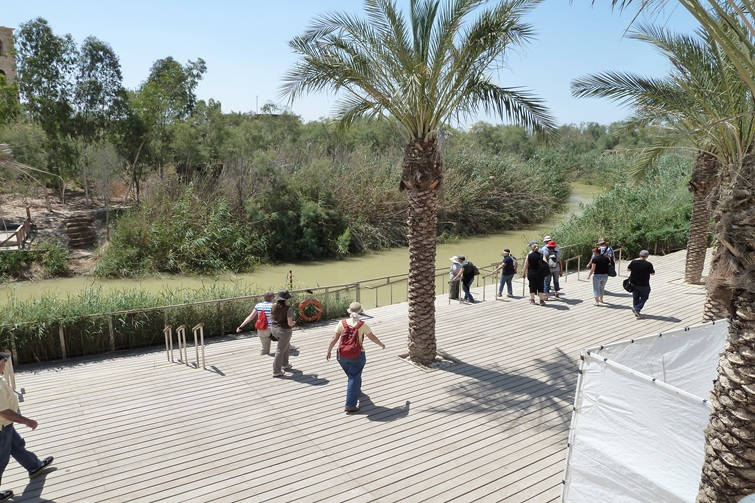
What to Expect at Qasr el-Yahud
- Today, Qasr el-Yahud is a well-maintained site managed by the Israel Nature and Parks Authority. Visitors will find a peaceful, reflective atmosphere, with facilities designed to accommodate both pilgrims and tourists. Here’s what you can expect:
- Baptismal Area: The main attraction is the riverbank itself, where steps lead down into the shallow, murky waters of the Jordan River. Pilgrims often don white robes (available for purchase or rent on-site) to participate in baptismal ceremonies or simply wade in the water as a symbolic act of renewal.
- Viewing Platforms: For those not entering the water, shaded platforms provide a comfortable spot to observe the river and reflect on its significance.
- Religious Services: Various Christian denominations hold services here, especially around Epiphany (January), when large crowds gather to commemorate Jesus’ baptism.
- Historical Markers: Informational plaques detail the site’s biblical and historical importance, offering context for visitors of all backgrounds.
- Border Proximity: The Jordan River marks the boundary between Israel and Jordan, and across the water, you’ll see the Jordanian baptismal site of Bethany Beyond the Jordan (Al-Maghtas). The two sites are just meters apart, separated only by the narrow river, with a small military presence on both sides ensuring security.
The natural setting is simple yet striking – reeds line the riverbanks, and the surrounding desert landscape contrasts with the flowing water. While not as grand as some of Israel’s other historical sites, Qasr el-Yahud’s understated beauty and spiritual weight leave a lasting impression.

Planning Your Visit
Qasr el-Yahud is located in the Jordan Valley, approximately 10 kilometers (6 miles) east of Jericho and 40 kilometers (25 miles) from Jerusalem. Pairing it with a day trip to the Dead Sea and Masada is a popular and practical choice, as all three destinations lie within the same region. Here’s how to make the most of your visit:
Getting There
- By Car: The site is easily accessible via Route 90, Israel’s longest highway, which runs parallel to the Jordan River. From Jerusalem, the drive takes about 45 minutes. From the Dead Sea’s hotel area (Ein Bokek), it’s roughly a 30-minute drive north. Free parking is available on-site.
- By Tour: Many organized tours from Jerusalem or Tel Aviv combine Qasr el-Yahud with the Dead Sea and Masada. This is a convenient option if you prefer a guided experience with transportation included.
- Public Transport: Direct buses to Qasr el-Yahud are limited. The closest hub is Jericho in the Palestinian Authority, reachable by bus from Jerusalem (Egged Bus 961), followed by a taxi or a pre-arranged ride to the site (about 15 minutes).
- Private Taxi: For a more flexible and comfortable option, consider booking a private taxi for your day trip to the region. This allows you to customize your itinerary, travel at your own pace, and enjoy door-to-door service. It’s especially convenient for travelers who want to make the most of their day, offering the freedom to visit multiple sites in the area without relying on limited bus schedules or unwieldy tour groups.
Opening Hours and Admission
- Hours: The site is open daily from 8:00 AM to 5:00 PM (4:00 PM in winter), except on Fridays and holiday eves, when it closes an hour earlier. Check the official Israel Nature and Parks Authority website for exact dates, as hours may vary during religious holidays.
- Cost: Entry is free, though donations are appreciated for site maintenance.
What to Bring
- Clothing: Dress modestly out of respect for the religious nature of the site – shoulders and knees should be covered. If you plan to enter the water, bring a swimsuit, towel, and water shoes (the riverbed can be slippery).
- Sun Protection: The desert sun is intense year-round, so pack sunscreen, a hat, and sunglasses.
- Water and Snacks: There are basic facilities (restrooms and a small shop), but no extensive dining options. Bring water and light snacks, especially if combining with other stops.
- Camera: The site’s serene beauty and unique geopolitical setting make it a great spot for photography.
Safety Considerations
- The area is safe for visitors, with security personnel present due to its proximity to the Jordanian border. However, stray beyond designated areas is prohibited due to the risk of unexploded landmines from past conflicts.
- Swimming is not allowed – only wading in the shallow baptismal area is permitted.
Tips for Visitors
- Best Time to Visit: Spring (March-May) and autumn (September-November) offer mild weather. Summer can be scorching (over 40°C/104°F), while winter is cooler but may bring rain.
- Respect the Site: Whether you’re religious or not, maintain a quiet, respectful demeanor, especially during ceremonies.
- Cross-Border Curiosity: You’ll see Jordanian visitors on the opposite bank – wave politely, but photography of military personnel or installations is discouraged.


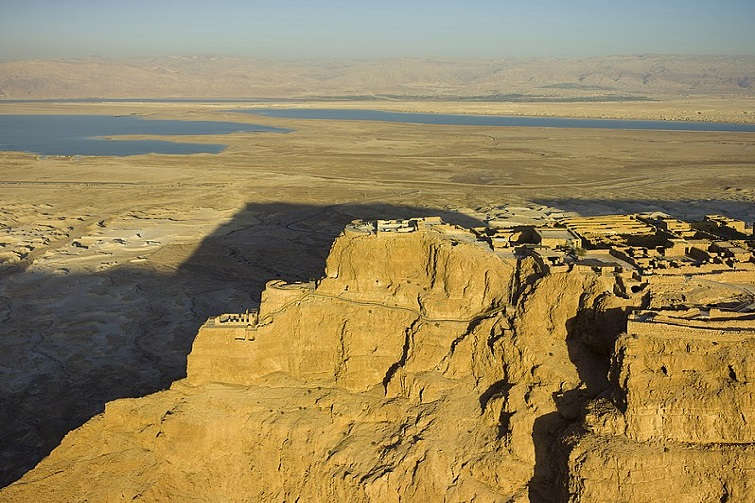
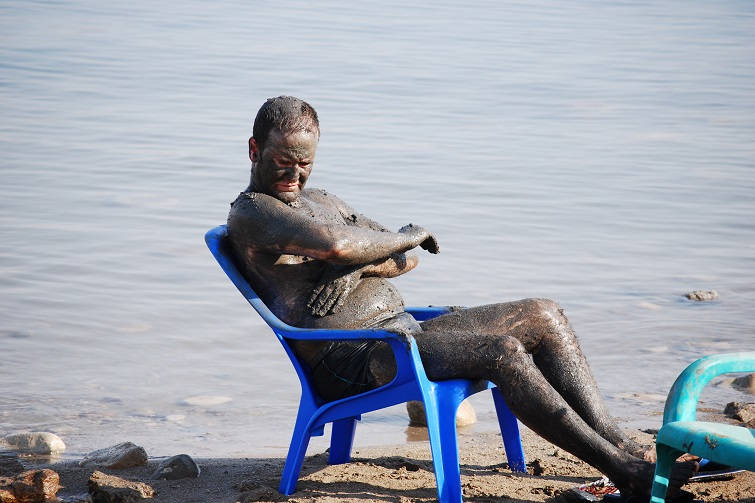
A Day Trip to Qasr el-Yahud, the Dead Sea, and Masada
A day trip encompassing Qasr el-Yahud, the Dead Sea, and Masada is a classic Israeli adventure, blending spirituality, nature, and history. Here’s a suggested itinerary:
- Morning: Masada (1.5-2 hours from Jerusalem)
- Start early with a visit to Masada, the ancient mountaintop fortress built by King Herod. Take the cable car or hike up the Snake Path to explore the ruins and enjoy panoramic views of the Dead Sea. Allow 2–3 hours for the visit.
- Driving time to the Dead Sea: ~30 minutes.
- Midday: Dead Sea (Ein Bokek)
- Head to the public beach in Ein Bokek (free entry) for a float in the mineral-rich waters or a mud bath. Spend 1–2 hours relaxing and recharging.
- Driving time to Qasr el-Yahud: ~30 minutes.
- Afternoon: Qasr el-Yahud
- End your day at the baptismal site, arriving by mid-afternoon to enjoy the peaceful ambiance and perhaps participate in a dip in the Jordan River. Plan for 1–1.5 hours here.
- Return to Jerusalem: ~45 minutes.
This itinerary offers a practical and enriching full-day private trip from Jerusalem. If starting from the Dead Sea area, the loop is even shorter, leaving more time to explore key sites, relax at the beach, or enjoy a scenic hike. Check out my other posts on day trips from Tel Aviv and from Jerusalem. If you’re arriving on a cruise ship, any of these day trips can also be arranged as shore excursions from Ashdod Port.
Exploring Beyond Qasr el-Yahud
Qasr el-Yahud is surrounded by fascinating sites that make for a well-rounded day trip, offering a blend of history, nature, and culture. If time allows, you can explore these nearby attractions to enrich your experience:
- Greek Orthodox Monastery: Just steps from the baptismal area, this picturesque monastery clings to the riverbank, offering a glimpse into monastic life and stunning photo opportunities.
- Qumran National Park: About 15 kilometers south, this archaeological site is where the Dead Sea Scrolls were discovered. Explore the ruins and visitor center (entry fee applies).
- Ein Gedi Nature Reserve: Roughly 30 kilometers south, the oasis of Ein Gedi features waterfalls, hiking trails, and wildlife, providing a refreshing contrast to the desert.
An Alternative Baptismal Option: Yardenit
For those touring Israel’s northern region, consider Yardenit, the baptismal site near the Sea of Galilee. Located where the Jordan River exits the lake, Yardenit offers a modern, well-equipped facility with similar spiritual significance. It’s an excellent choice for a day trip to Nazareth and the Sea of Galilee, including sites such as Capernaum, Tabgha, and Mount of Beatitudes.
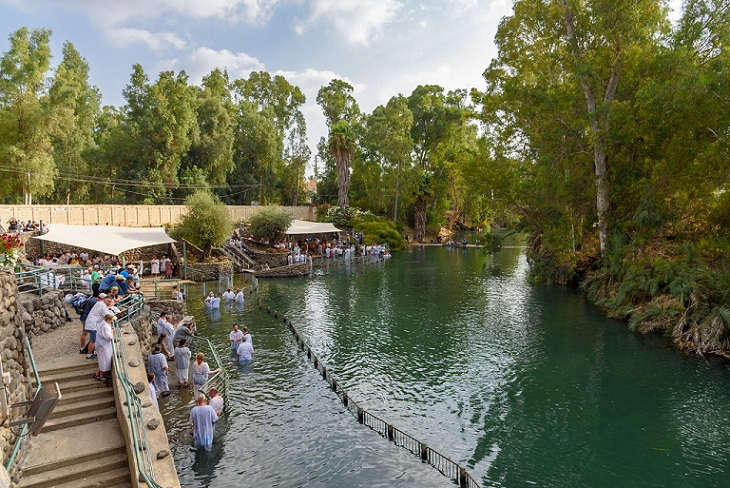
Why Visit Qasr el-Yahud?
- Qasr el-Yahud offers a rare blend of tranquility and historical depth, set against the stark beauty of the Jordan Valley. For pilgrims, it’s a sacred encounter with biblical history. For tourists, it’s a chance to witness a living piece of the past and a unique geopolitical crossroads. Paired with the natural wonders of the Dead Sea and the dramatic story of Masada, it completes a day of exploration that captures the essence of Israel’s diverse heritage.
Whether you’re seeking spiritual renewal, historical insight, or simply a memorable travel experience, Qasr el-Yahud is a destination that resonates long after you leave its shores. Feel free to contact me with any questions or itinerary-related inquiries and let’s plan your perfect day trip together!
FAQ: Visiting Qasr el-Yahud
Related Posts
Explore More Travel Guides with Tips to Make Your Trip Better

